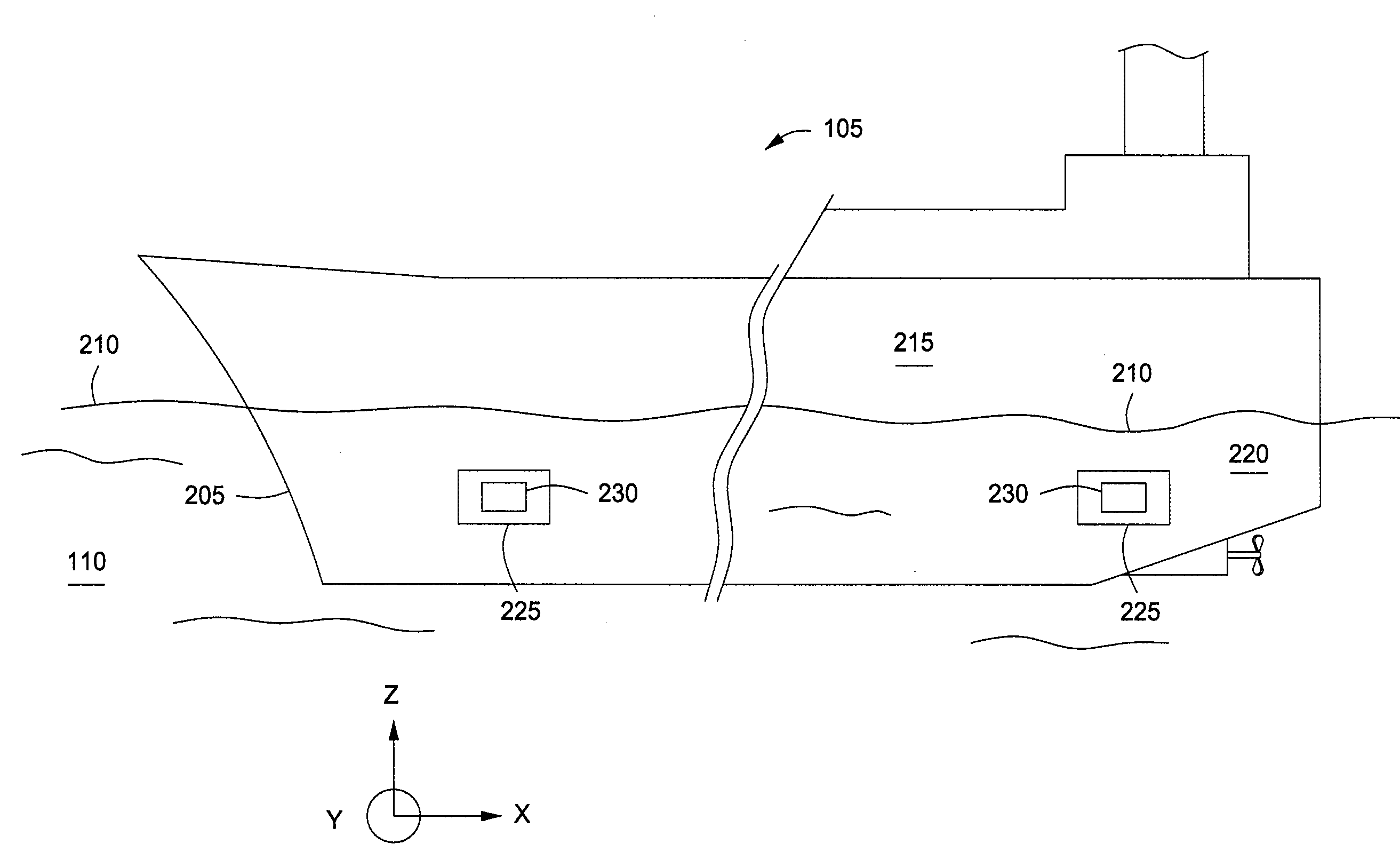Water intake system filter
a filter and water intake technology, applied in the direction of filtration separation, separation process, vessel construction, etc., can solve the problems of affecting ecological, marine biota surviving transfer into ballast tanks will be locationally displaced, and fish injuries or deaths, so as to reduce the flow velocity of water
- Summary
- Abstract
- Description
- Claims
- Application Information
AI Technical Summary
Benefits of technology
Problems solved by technology
Method used
Image
Examples
Embodiment Construction
[0028]The present invention generally relates to water collection systems for filling intake water on naval vessels and may be exemplarily described for use on cargo ships, but embodiments described herein may be used on any vessel that requires intake water to perform required service or fulfill a need upon the vessel. Examples include cruise ships, submarines, personal watercraft, and any other marine vessel configured to gather, store, and expel ballast water, and / or gather, use, and discharge cooling and / or auxiliary service water. Although the invention is exemplarily described with respect to ballast, cooling, and auxiliary water systems aboard these vessels, embodiments described herein may also be adapted to filter incoming water used in other water intake systems aboard the vessels as well.
[0029]FIG. 1 is a perspective view of an exemplary landing site 100 having a vessel 105 in a body of water 110 adjacent a processing facility 115 located onshore. The vessel 105 is shown ...
PUM
| Property | Measurement | Unit |
|---|---|---|
| stand-off distance | aaaaa | aaaaa |
| distance | aaaaa | aaaaa |
| irradiance | aaaaa | aaaaa |
Abstract
Description
Claims
Application Information
 Login to View More
Login to View More - R&D
- Intellectual Property
- Life Sciences
- Materials
- Tech Scout
- Unparalleled Data Quality
- Higher Quality Content
- 60% Fewer Hallucinations
Browse by: Latest US Patents, China's latest patents, Technical Efficacy Thesaurus, Application Domain, Technology Topic, Popular Technical Reports.
© 2025 PatSnap. All rights reserved.Legal|Privacy policy|Modern Slavery Act Transparency Statement|Sitemap|About US| Contact US: help@patsnap.com



